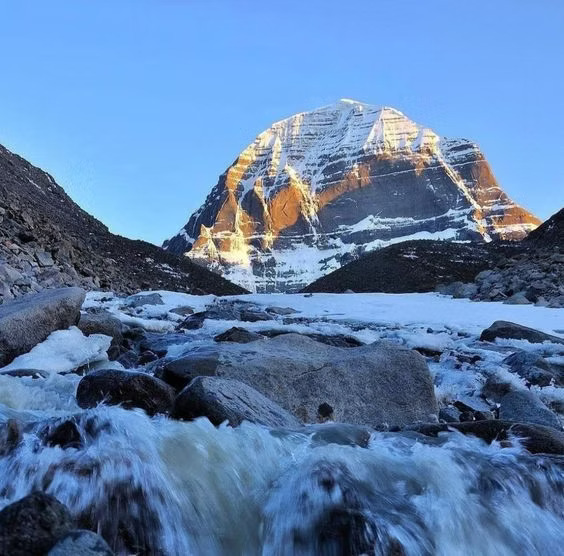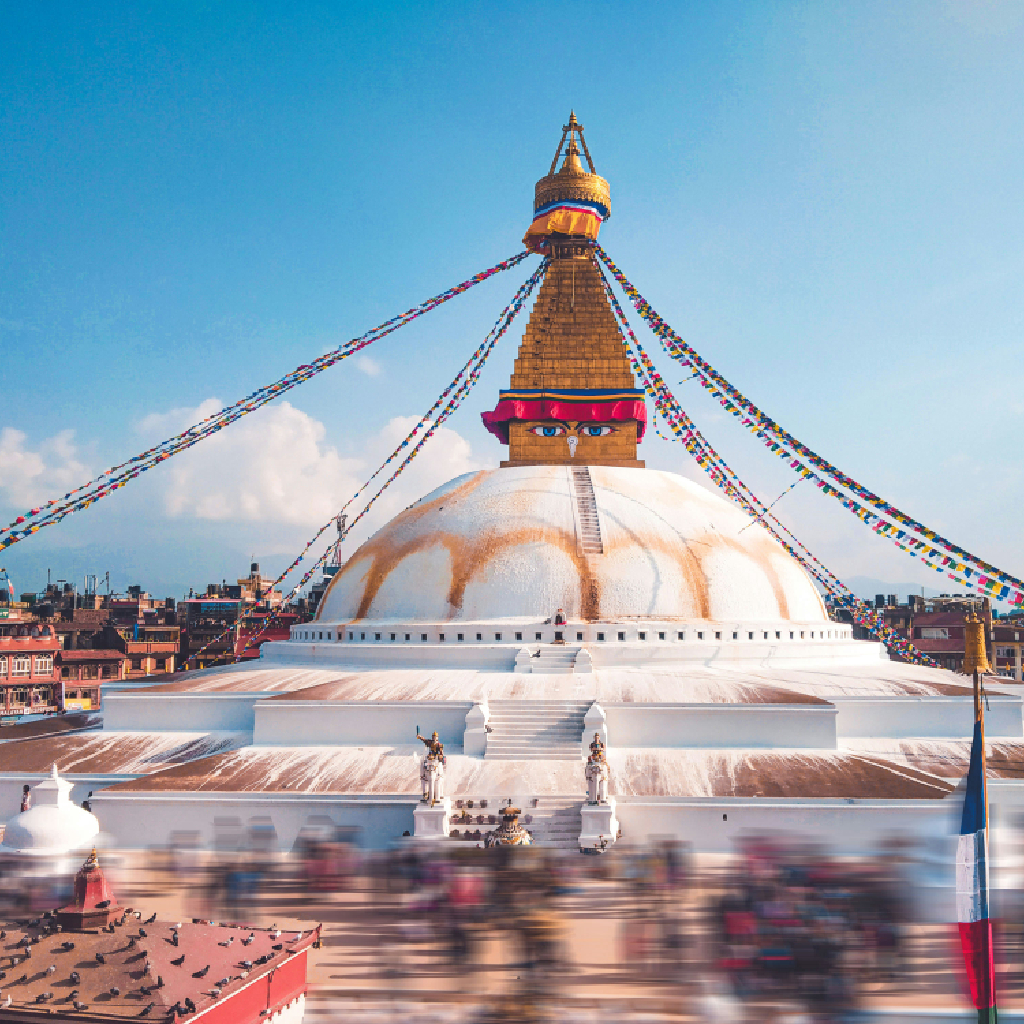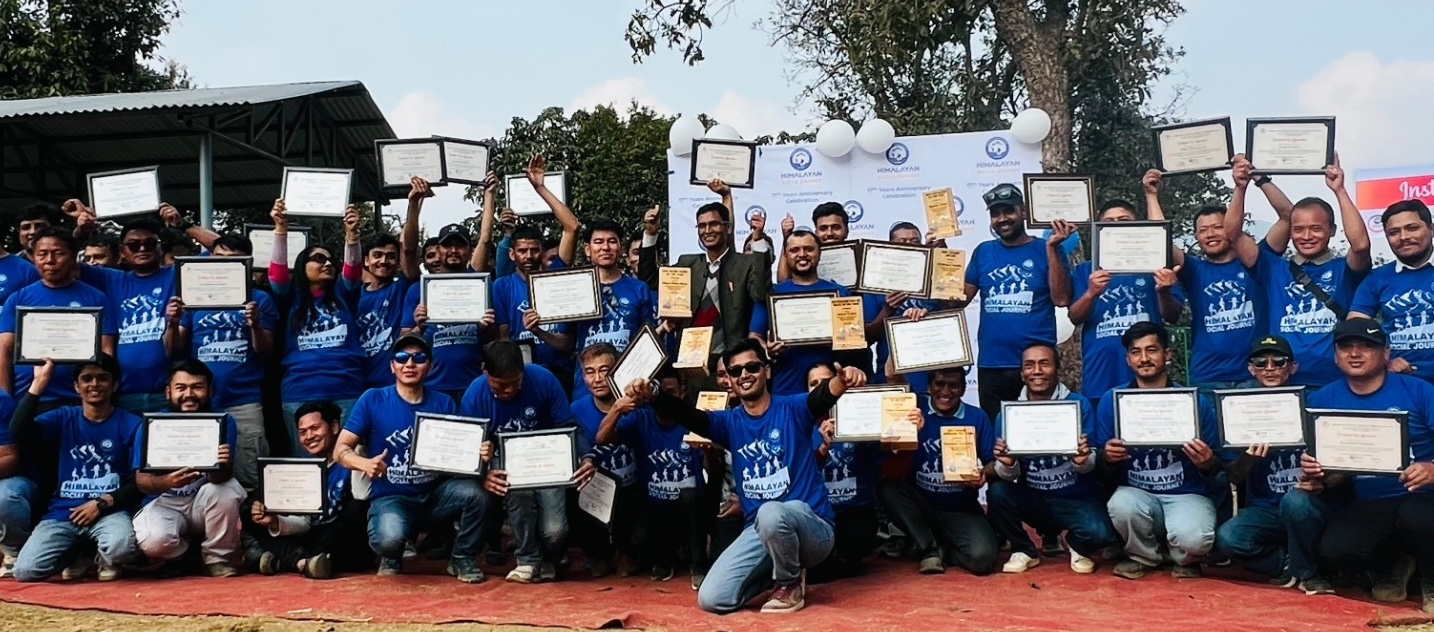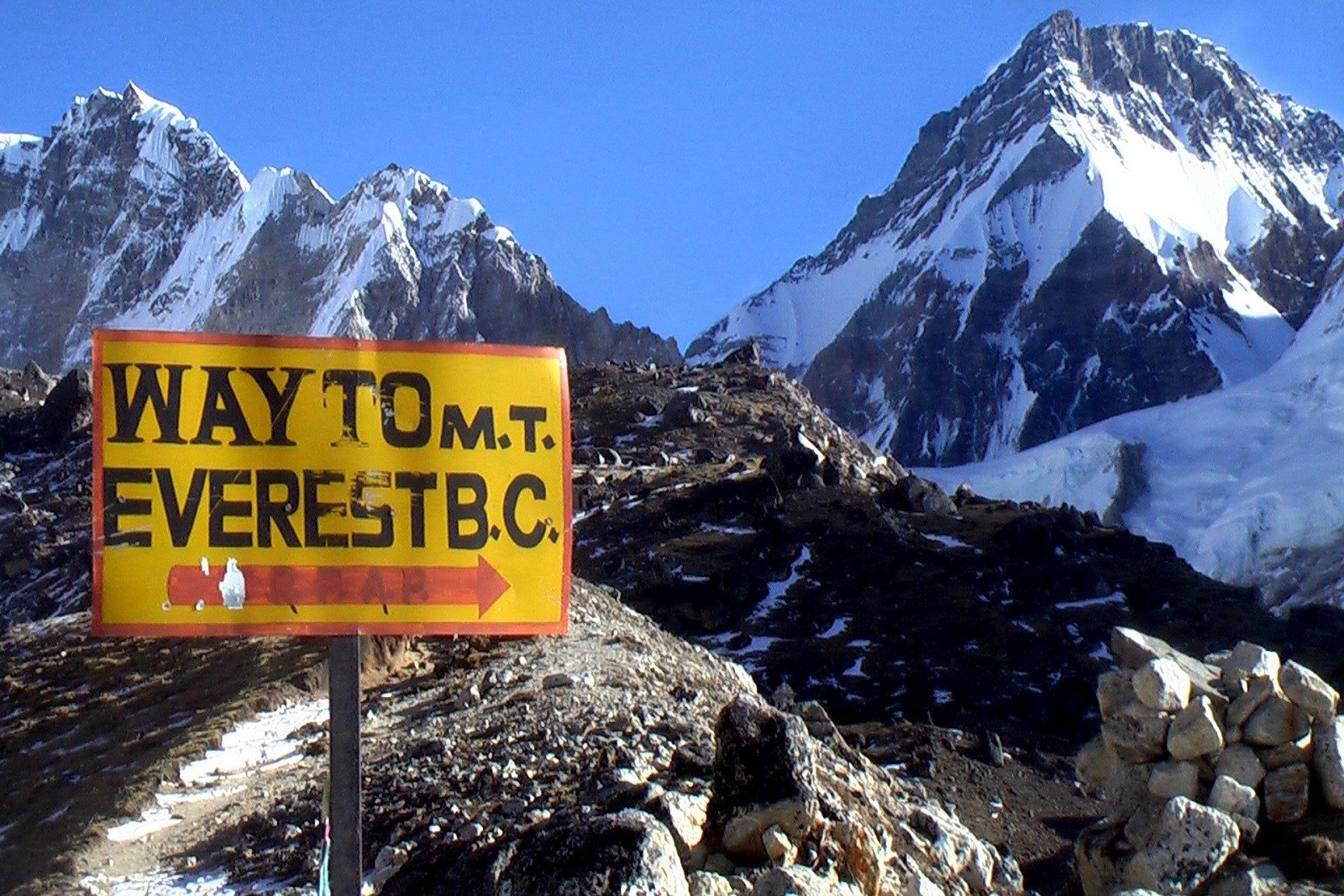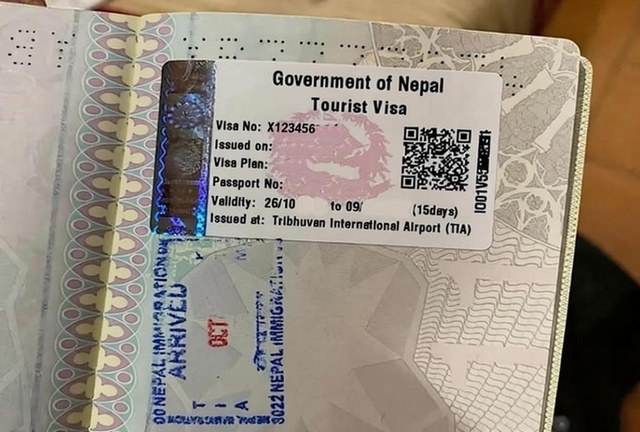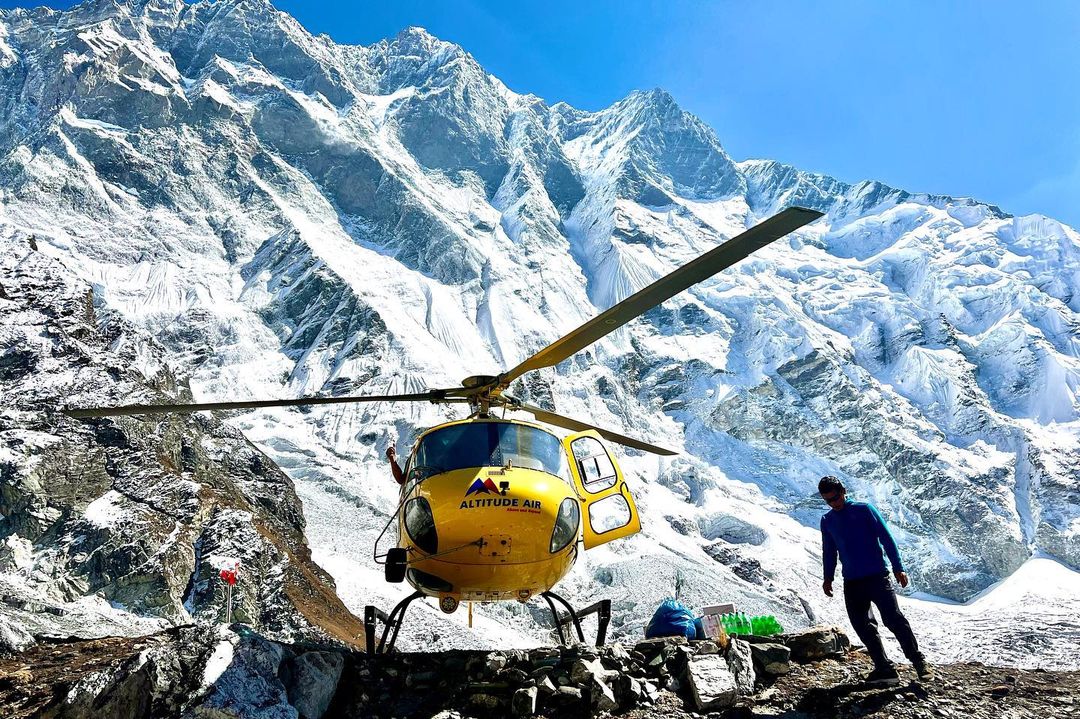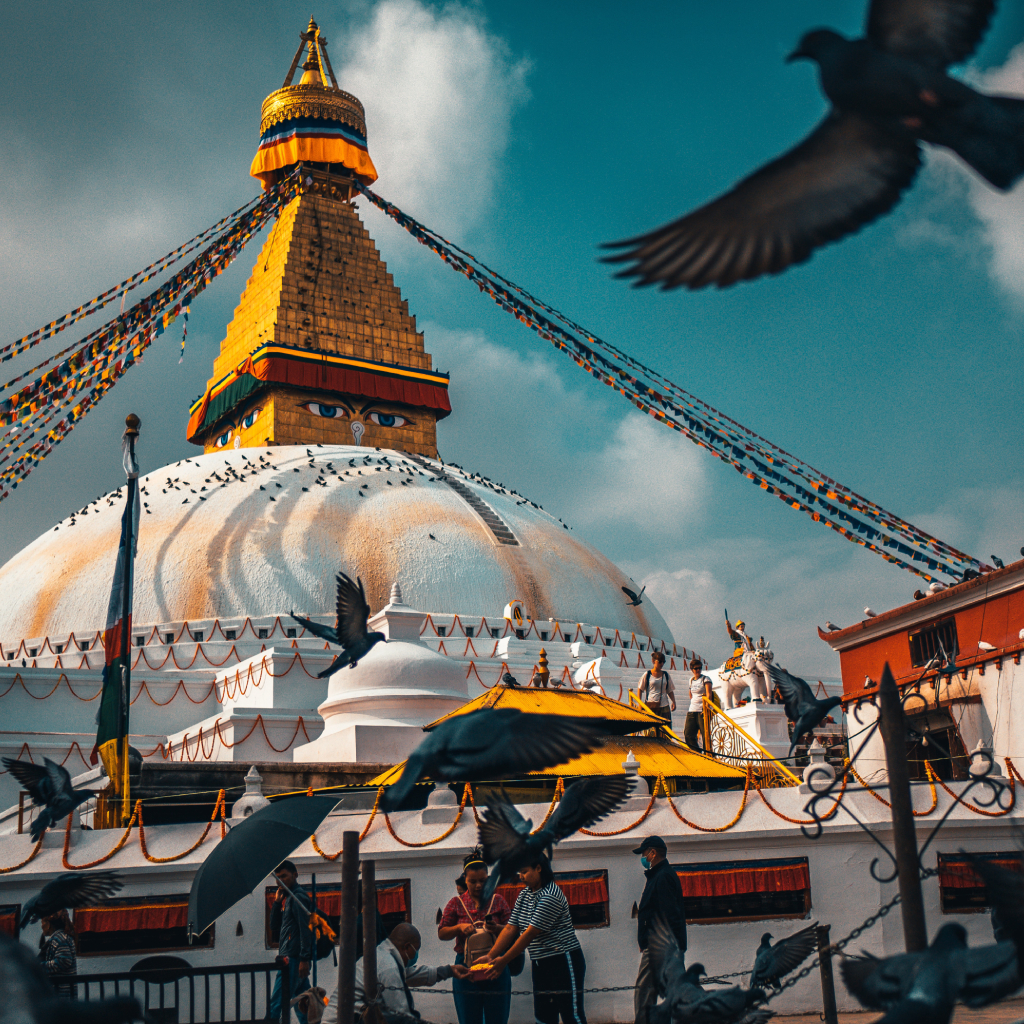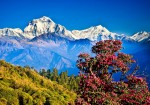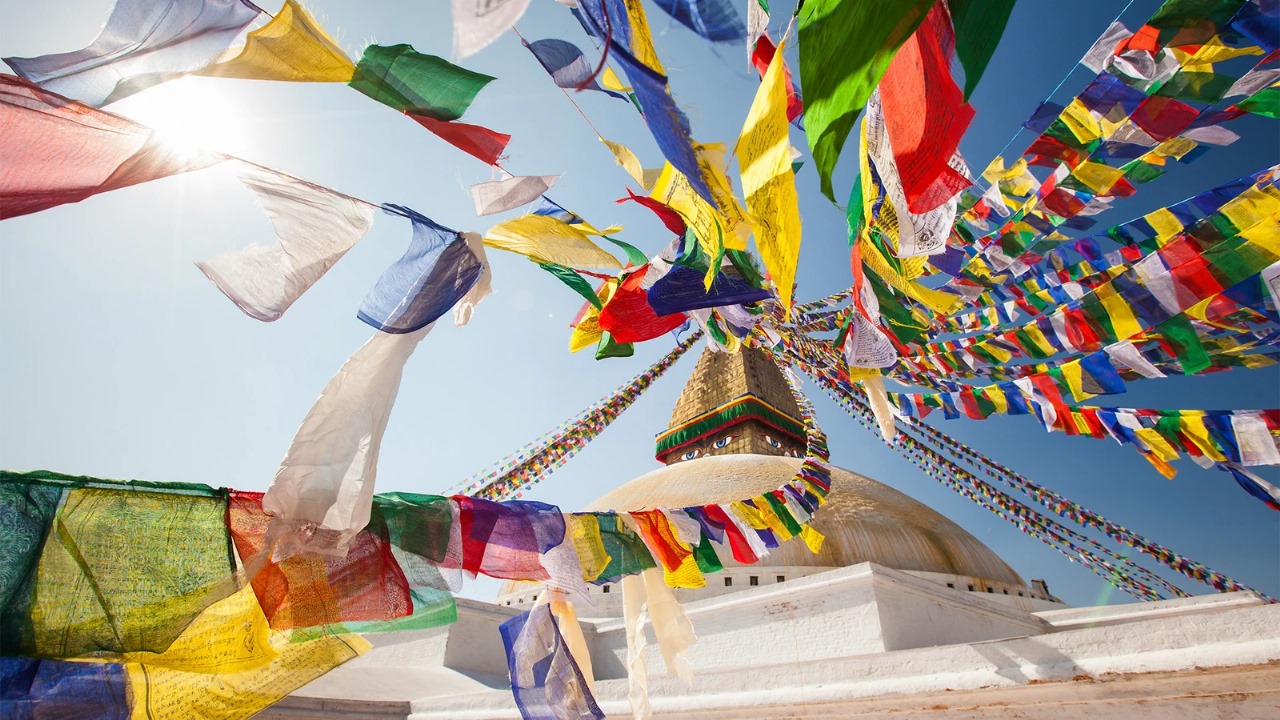Introduction to the Everest Base Camp Trek:
Surrounded by the majestic peaks of the Himalayas, Everest basecamp beckons adventures to embark on an awe- inspiring journey. At an elevation of 5,364 meters, this iconic base camp serves as the gateway to the world’s highest summit, Mount Everest , promising a trekking experience filled with breathtaking landscapes and cultural encounters.
Navigating the path to Everest Base Camp is a captivating expedition that weaves through the rugged terrain of the Khumbu region. Trekking to Everest base Camp involves a multi-day journey, starting in Lukla and winding through picturesque Sherpa villages, suspension bridges , and dense rhododendron forests. A trekker ascends, the landscape transforms, offering breathtaking views of snow-capped peaks, including Ama Dablam and Thamserku. The trail passes through iconic landmarks like Namche Bazaar, Tengboche, Monastery, and Dingboche, providing cultural insights into Sherpa traditions.
The trek demands acclimatization stops to adjust to the increasing altitude, ensuring a safe and-enjoyable ascent. As trekkers approach Everest Base Camp, the views of the Khumbu. Icefall and the dauting South come into sight. The journey culminates at the legendary base camp itself, offering a surreal perspective of the world’s highest peak Mount Everest.
Everest Basecamp Trek - A challenging Trek
The Everest Base Camp trek is considered a challenging trek. The trek involves navigating through varying altitudes, starting in Lukla at around 2, 840 meters (9,318 feet) and reaching Everest Base Camp at 5,364 meters (17,598 feet). The high-altitude terrain poses challenges like altitude sickness, requiring proper acclimatization.
The trek also includes steep ascents, rocky paths and challenging weather conditions, especially in higher altitudes. Trekkers need to be physically fit and mentally prepared for the demanding journey. Additionally factors like unpredictable weather, remote locations, and the need for proper gear add to the overall challenge of the Everest Base Camp trek.
Despite its difficulties, the trek is immensely rewarding, offering stunning views, cultural encounters with Sherpa communities, and the accomplishment of reaching the iconic Everest Base Camp. Trekkers are advised to undergo proper preparation, including physical conditioning and acclimatization, to ensure a safe and enjoyable experience.
Everest Base Camp Duration:
The duration for the Everest Base Camp trek with places can vary based on the specific itinerary and the route taken. On average, a standard itinerary for the Everest Base Camp treks takes approximately 12 to 14 days. This duration allows for proper acclimatization and exploration of key places along the trail.
Here’s a generalized breakdown of the trek with significant places:
Day 1 : Arrival at Kathmandu
Day 2 : Kathmandu to Lukla by flight /Helicopter and trek to Phakding
Day 3 : Trek to Namche from Phakding
Day 4 : Acclimatization at Namche
Day 5 : Trek to Debouche from Namche Bazaar
Day 6 : Trek to Dingboche from Debouche
Day 7 : Acclimatization day at Dingbouche
Day 8 : Dingbouche to Lobuche
Day 9 : Trek to Gorekshep. Hike to EverestBase Camp and back to Gorekshep
Day 10 : Hike to Kalapathar and Descend down to Pheriche
Day 11 : Trek down to Namche Bazar from Pheriche
Day 12 : Namche Bazar to Lukla
Day 13 : Fly back to Kathmandu
Day 14 : Departure from Kathmandu or start new trip
For detail itinerary Click here
Keep in mind that the above is a general outline, and actual itineraries may vary. Additionally, allowing a few extra days for flexibility due to weather conditions or unexpected challenges is advisable. It’s crucial to choose an itinerary that allows for proper acclimatization to reduce the risk of altitude related issues.
Best Seasons for the Everest Base Camp Trek
The primary trekking seasons for the Everest Base Camp adventure are pre- monsoon(spring) and post-monsoon(autumn). Here’s a breakdown:
1. Spring (Pre-Monsoon):
Months: Late March to early June.
Highlights: Mild temperatures, blooming rhododendrons and clear skies. This is a popular season with stable weather, making it ideal for trekking.
2. Autumn (Post-Monsoon):
Months: Late September to early November
Highlights: stable weather, clear skies, and excellent visibility. The temperatures are cool, and the trekking trails are at their busiest during this season.
3. Winter:
Months: Late November to February
Considerations: Colder temperatures, especially at higher elevations. Winter trekking is possible, but it’s less common due to the risk of snow and colder conditions.
4. Monsoon (Rainy Reason):
Months: June to September
Considerations: Not recommended for trekking due to heavy rainfall, leeches, and the risk of landslides. Trails can be slippery and less safe during this period.
Choose the season that aligns with your preferences and comfort level with weather conditions. Spring and autumn are the most popular times for the Everest Base Camp trek, offering favorable weather and stunning views of the Himalayas. Permit Protocols for Everest Base Camp Trek
Permit Protocols for Everest Base Camp Trek
To trek to Everest Base Camp, several permits are required. The common permits for the Everest region trek are given below:
1. Sagarmatha National Park Entry Permit: This permit is essential for entering Sagarmatha National Park, where Everest Base Camp is located. We can obtain it in Kathmandu or in Monjo (the entrance to the park).
2. Khumbu pasang Lhamu rural Municipality Entrance Permit: this permit is specific to the local government in the Khumbu region and is usually obtained in Lukla.
You should keep in the mind that permit requirements and procedures may change and it’s advisable to check with the appropriate authorities or reliable trekking agency for the most up to date information before planning Everest Base Camp trek.
Guidelines and regulations for trekking within the National Park
Trekking in national parks generally involves adhering to specific rules and regulations aimed at preserving the environment, ensuring the safety of trekkers, and respecting local ecosystems. While regulations can vary by country and park.
Here are common rules associated with trekking in national parks:
- Entry permits: obtain the necessary entry permits required for the specific national park. These permit help regulate the number of visitors and contribute to conversation efforts.
- Designated Trails:Stay on designated trails to minimize environmental impact, protect flora and fauna, and avoid disturbing sensitive ecosystems.
- Leave No Trace: Follow the principles of ‘’Leave No Trace’ ’by carrying out all waste, including biodegradable items. Minimize your environmental footprint during the trek.
- Respect Wildlife: Observe Wildlife from a distance, avoid feeding them and refrain from disrupting their natural behaviors. Respect the habitat and ecosystems.
- Camping Regulations: Follow established camping regulations, including using designated campsites if applicable, and obtaining necessary permits for overnight stays.
- Fire Safety: Adhere to fire safety guidelines, and only use designated areas for Campfires if permitted. Be cautious to prevent accidental wildfires.
- Cultural and Historical sites: Respect Cultural and historical sites within the national park. Avoid touching or damaging any structures.
- Wilderness Ethics:. Adhere to wilderness ethics, promoting responsible behavior and sustainable practices. This includes minimizing noise pollution and respecting the solitude of the wilderness.
- Safety Protocols: Follow safety protocols, including informing park authorities of your itinerary, being aware of weather conditions, and having the necessary emergency contacts.
- Wilderness Permit Compliance: If applicable, ensure compliance with any additional wilderness permits specific to certain zones or areas within the national parks.
It’s crucial to research and understand the specific rules and regulations of the national park you plan to trek in, as they can vary widely. Always check with the park authorities or relevant agencies for the most up to date information before embarking on a trek in a national park.
Guidelines and regulations for trekking within the National Park
Trekking in national parks generally involves adhering to specific rules and regulations aimed at preserving the environment, ensuring the safety of trekkers, and respecting local ecosystems. While regulations can vary by country and park. Here are common rules associated with trekking in national parks:
- Entry permits: obtain the necessary entry permits required for the specific national park. These permit help regulate the number of visitors and contribute to conversation efforts.
- Designated Trails: Stay on designated trails to minimize environmental impact, protect flora and fauna, and avoid disturbing sensitive ecosystems.
- Leave No Trace: Follow the principles of ‘’Leave No Trace’ ’by carrying out all waste, including biodegradable items. Minimize your environmental footprint during the trek.
- Respect Wildlife: Observe Wildlife from a distance, avoid feeding them and refrain from disrupting their natural behaviors. Respect the habitat and ecosystems.
- Camping Regulations:Follow established camping regulations, including using designated campsites if applicable, and obtaining necessary permits for overnight stays.
- Fire Safety: Adhere to fire safety guidelines, and only use designated areas for Campfires if permitted. Be cautious to prevent accidental wildfires.
- Cultural and Historical sites: Respect Cultural and historical sites within the national park. Avoid touching or damaging any structures.
- Wilderness Ethics: Adhere to wilderness ethics, promoting responsible behavior and sustainable practices. This includes minimizing noise pollution and respecting the solitude of the wilderness.
- Safety Protocols: Follow safety protocols, including informing park authorities of your itinerary, being aware of weather conditions, and having the necessary emergency contacts.
- Wilderness Permit Compliance:If applicable, ensure compliance with any additional wilderness permits specific to certain zones or areas within the national parks.
It’s crucial to research and understand the specific rules and regulations of the national park you plan to trek in, as they can vary widely. Always check with the park authorities or relevant agencies for the most up to date information before embarking on a trek in a national park.
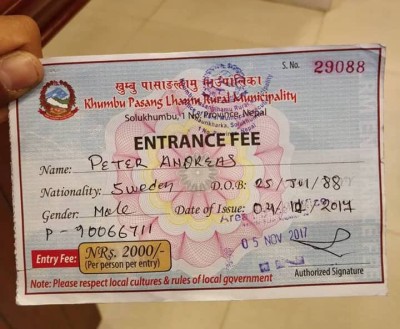
Trekking Insurance
Having comprehensive trekking insurance is crucial when planning a journey to Everest Base Camp. The challenging terrain, high altitude, and remote location necessitate coverage that includes specific aspects. Here are key considerations for trekking insurance in Everest Base Camp.
- Emergency Medical Coverage: Ensure your insurance cover emergency medical expenses, including evacuation by helicopter if necessary. Altitude related illness is a risk, and evacuation can be costly.
- Coverage for High altitude:Verify that your insurance explicitly covers trekking at high altitudes, as Everest Base camp is located over 5,000 meters.
- Cancellation and Interruption:opt for insurance that provides coverage for trip cancellations or interruptions due to unseen circumstances, such as medical emergencies or travel disruptions.
- Heliceptor Evacuation: Confirm that your insurance coverage for heliceptor may be required incase of serious illness or injury.
- Gear and Equipment:If you are carrying expensive trekking gear, make sure that your insurance covers the loss, theft, or damage to such equipment.
- Travel Delays: Check if your insurance includes coverage for travel delays, as weather conditions in the Everest region can sometime lead to flight cancelation or delays.
- Adventure Activities coverage: Verify that the insurance policy covers adventure activities related to trekking and climbing. Some policies exclude certain high-risk activities.
- Search and Rescue: Ensure your policy covers search and rescue expenses which may be necessary in remote regions like Everest.
- 24/7 Emergency Assistance: Choose insurance that provides 24/7 emergency assistance, allowing you to access help at any time during your trek.
- Review Policy Exclusion:Carefully review the policy exclusions to understand what is not covered. Pay attention to pre-existing conditions, adventure sports exclusions, and other limitations.
Before purchasing insurance, communicate your trekking plans and the specific requirements for Everest base Camp with the insurance provider. Additionally, it’s advisable to carry a copy of your insurance policy and contact details during the trek. Always check the policy details and ensure it aligns with the challenges and conditions of trekking in high-altitude and remote regions.
Accommodation at Everest Base Camp Trek
Accommodation at Everest Base camp primarily consists of tea houses or basic lodges along the trekking route. These establishments provide a place to rest, meals, and often a sense of camaraderie among trekkers. The accommodations are simple, typically offering shared rooms with basic bedding. Heating may be available in common areas, but rooms do not have individual heating facility. It’s essential to be prepared for basic facilities, including shared bathroom and to carry a suitable sleeping bag.
The lodges along the Everest Base Camp trek are strategically locate to facilitate acclimatization and provide shelter against the harsh mountain environment. As you ascend, the availability of amenities may decrease, and the costs of accommodation may rise. Reservations during peak trekking seasons are advisable, and flexibility in plans is recommended due to weather conditions or other unforeseen circumstances. The experience of staying in these teahouses adds to the adventure of the Everest Base Camp Trek, offering trekkers an authentic experience in the heart of the Himalayas.
Typically, the standard room rate is $10, but for a luxirious room with an attached bathroom, the price starts at $25 and can increase on additional amenities.
Food and Beverages available at Everest Base Camp trek routes
During the Everest Base Camp trek, you can expect a variety of cuisine and beverages offered at the tea house along the trail. The menu is diverse, catering to trekkers with a mix of local and international dishes. The main course meal is priced about $5, with additional charges applicable for tea, coffee, or any other beverages.Here are common food and drink options:
Food:
- Dal Bhat: A traditional Nepali meal consisting of lentil soup, rice and various side dishes. - NPR 800
- Sherpa Stew: Hearty and nourishing stew with local ingredients-NPR 1000
- Momos: Nepali dumplings filled with meat or vegetables-NPR 1100
- Pasta and Noodles: often available in various styles-NPR 1000
- Pizza and Burgers: Basic versions but satisfying after a day of trek-NPR 1200
- Omelets and Eggs: A popular choice for Breakfast-NPR 650
Beverages:
- Tea and Coffee: local Himalayan tea including the famous masala chia, and instant coffee are widely available.(milk tea-NPR300, Milk coffeNPR350, black tea-NPR200, black coffee-NPR280)
- Hot Chocolate: A comforting option, especially in colder weather-NPR 350
- Soft Drinks: A selection of Sodas and juices-NP R600
- Local Brews: in some tea houses, you may find local and international beer options-NPR 950
- Water: It’s crucial to stay hydrated, and bottled water or water purification tablets are commonly used-NPR 400
Just keep in the mind that the availability of items may vary with the altitude, and the cost of food and drinks generally increases as you ascend. Tea houses may also offer a limited menu during off-season. It’s advisable to carry some snacks and energy bars for the trek., especially in higher altitudes where options may be more limited.
Altitude Sickness while on the Everest Base Camp
Altitude Sickness, also known as acute mountain sickness, can occur at Everest Base Camp due to high altitude. As trekkers ascend to higher elevations, the air pressure and oxygen levels decrease, making it challenging for the body to adapt. Symptoms of altitude sickness typically manifest above 2,400 meters (7,874 feet) and can include headache, nausea, fatigue, dizziness, and difficulty sleeping.
At Everest Base Camp, which is situated at approximately 5,364meters. (17,598 feet), the risk of altitude sickness is significant. IT is essential for trekkers to acclimatize gradually by incorporating rest days to their itinerary, staying hydrated, and listening to their bodies. If symptoms of altitude sickness develop, it’s crucial to descend to a lower altitude to alleviate the condition. Trekkers are advised to be aware of the signs, take preventive measures and seek medical assistance if symptoms persist or worsen.
Proper acclimatization maintaining hydration, and paying attention to one’s health are key factors in mitigating the risk of altitude sickness during the Everest Base Camp.
Powering electronic devices along the Everest Trek
Along the Everest Base Camp trek, many tea houses and lodges provide charging facilities for electronic devices. However, it is important to note that these services may come at an additional cost, and the reliability of electricity can varyfrom Namche Bazaar, especially in higher altitudes.It charges from $3-$5 depending upon altitudes. It is a advisable to carry a portable power bank and extra batteries to ensure you can charge your devices, particularly in case of power outages or unavailability of charging facilities.
Network connectivity in the Everest Region
The network connectivity in the Everest region varies. In lower altitudes and more populated areas, you can find mobile network coverage, including 3 G or 4 G in some places. However, as you ascend higher, especially beyond Namche Bazaar, the availability and reliability of network connectivity may decrease. In remote and high-altitude areas, you might experience limited or no signal depending on the specific location and local infrastructure. It is advisable to inform family and friends about potential communication challenges and consider alternative means, such as satellite phones, for emergencies in areas with limited network coverage.
Photography and Filming
Embarking the Everest Trek provides a captivating canvas for photography and filming. The majestic landscapes, vibrant Sherpa culture, and the challenging ascent offer unique visual narratives. From panoramic mountain views to intimate glimpses of local life, the journey unfolds a rich tapestry for creative expression. Whether documenting personal achievements or capturing raw beauty of the Himalayas, the Everest trek offers abundant opportunities for photographers and filmmakers to weave stories that resonate with the spirit of adventure and exploration. For non-commercial purposes you generally don’t need to pay for personal photography and filming. However, if you plan to engage in professional or commercial photography or filming, you may need to obtain permits from relevant authorities.
Guides
It is better to hire professional guides for Everest Base Camp treks. A guide can enhance your overall trekking experience by providing valuable insights into the local culture, navigating the trails, ensuring safety, and assisting with permits and logistics. Additionally having a guide can be particularly helpful for those unfamiliar with high-altitude trekking or the Everest region.
Porters
If you are referring to hiring a porter for the Everest Base Camp trek, it’s a common and practical choice for many trekkers. Porters can carry a portion of your gear, allowing you to focus on enjoying the trek without the added burden of a heavy backpack. When hiring a porter, it is essential to do so through a reputable trekking agency to ensure fair wages, proper working conditions, and adherence to ethical guidelines. Always communicate clearly about the weight they will be carrying and any specific requirement you may have.
Bathing facilities in mountainous areas
The availability of bathing facilities in mountainous area can vary. In some regions, especially along popular trekking routes like Everest Base Camp, tea houses and lodges may provide basic shower facilities for trekkers. However, it is essential to note that these facilities might be limited, and hot shower may come at extra cost.
In more remote or higher- altitude locations, the availability of bathing facilities could be minimal, and trekkers might need to adapt to using alternative methods such as wet wipes or a basin for quick wash.
Packing lists for the Trek
When packing for the Everest Base camp trek, it is essential to strike a balance between being well- prepared and keeping your back pack manageable. Here’s a general packing list to consider
Clothing:
- Waterproof and windproof jacket
- Insulated jacket or fleece
- Moisture- wicking base layers
- Trekking pants and shorts
- Thermal underwear
- Waterproof pants
- Long-sleeve shirts and T-shirts
- Insulted gloves and a hat
- Warm socks and trekking boots
- Gaiters (for snow and muddy condition)
Gear
- Backpack (daypack and trekking backpack)
- Sleeping bag suitable for cold temperatures
- Trekking poles
- Headlamp with extra batteries
- Sunglass with UV protection
- Water bottle
- Quick -dry towel
- Multi- tool or knife
- Duct tape and repair kits.
Accessories:
- Sunscreen (high spf)
- Lipbalm with spf
- First aid kit (basic medicines, blister care etc)
- Personal toiletries
- Wet wipes and hand sanitizer
- Insect repellent
- Camera or smartphone for photography
- Power bank and charging cables
- Lightweight lock for your backpack.
- Document
Documents
- Passport and necessary permits
- Travel insurance with trekking coverage
- Emergency contact information
Footgear
- Sturdy and comfortable trekking boots.
- Sandals or light weight shoes for evening
- sunglasses and hats
Miscellaneous:
- Snacks and energy bars
- Trekking map and guide book
- Journal and pen
- Cash (local currency) for small expenses
- Plastic bags for water proofing
- Portable water purification system or tablets
Remember, the key is to pack efficiently and prioritize essentials. Be prepared for varying weather conditions, as temperature can fluctuate significantly during the trek.
The richness of culture, festivals, and Himalayan hospitality
The Everest Base Camp trek offers a profound exploration of the region’s cultural tapestry , vibrant festival and warm himalaya hospitality
Culture:
Immerse yourself in the unique traditions of the Sherpa people, witnessing their ancient monasteries adorned with prayer flags and intricately craved mani stones. Engage with the local communities along the trail, gaining insights into their daily rituals, art and architecture that reflect the centuries ols cultural heritage.
Festivals:
Depending on you timing, you may encounter traditional festivals such as Mani Rimdu, where monasteries come alive with colorful ceremonies, masked dances, and spiritual rituals. Participate in the festivals offering glimpse into the religious and cultural celebrations that define life in the Everest region.
Himalayan Hospitality:
Experience the legendary warmth and Himalayan hospitality as you traverse through welcoming tea houses and lodges. The local hosts, often of Sherpa descent, are known for their genuine friendliness and willingness to share their stories. This hospitality extends beyond comfortable accommodations, creating an atmosphere that fosters cultural exchange and leaves lasting impressions.
Together, the cultural richness, festive celebrations, and genuine hospitality of the Himalayas from an integral part of the Everest trek, creating a journey that extend beyond breathtaking landscapes to encompass the heart and soul of the region.
Trekking Route
The classic trek to Everest Base camp starts in Lukla and passes through Namche Bazaar, Tengboche, Dingboche and Gorak Shep. The route offers breathing views of the Himalayas.
Few Things to note while doing Everest Trek
Acclimazation is key :
Take time to acclimatize at higher altitudes to avoid altitude sickness. The trek involves gradual ascents, with rest days for adaption.
- Proper Gear: Invest in good-quality trekking gear, including a sturdy pair of trekking boots, warm clothing, and a reliable backpack. Be prepared for varied weather conditions.
- Hydration and Nutrition: Stay well-hydrated and consume a balance diet to maintain energy levels. Carry water purification tablets and snacks for the trek.
- Permit and Documentation: Obtain the necessary permits before starting the trek. Have your identification and trekking permits readily accessible for inspection.
- Travel insurance: Ensure you have comprehensive travel insurance that covers trekking at high altitudes and potential medical emergencies.
- Respect local culture: Be respectful of the local customs and traditions. Follow the guideline for waste disposal and respect the environment.
- Emergency contact: Carry a list of emergency contacts, including local authorities, your embassy and your trekking agency. Stay connected with your guides and fellow trekkers.
- Trekking agency: Consider hiring a reputable trekking agency with experienced guides. They can enhance your safety and overall trekking experience.
- Weather updates: Stay informed about the weather conditions along the trekking route. Be prepared for sudden changes in weather, especially at higher altitudes.
- Physical preparation: Prioritize physical fitness before the trek. Regular exercise, cardiovascular training, and strength exercises will help you cope with the demands of the trek.
Remember, safety is paramount and it is essential to be well-prepared for the challenges of Everest base trek.
Alternatives
If you are considering alternative treks that offer stunning landscapes and unique experiences, here are few options:
- Annapurna Circuit Trek: this trek explores diverse landscapes from subtropical forests to high- altitude desert. The trek offers breathtaking views and encounters with diverse ethnic communities.
- Langtang Valley Trek: Close to Kathmandu, Langtang valley provides a shorter trek with picturesque landscapes and encounters with Tamang culture. You can explore the remote Langtang Gosaikunda region.
- Manaslu Circuit Trek: Less crowded than Everest or Annapurna , the Mansalu circuit offers a challenging trek around the eighth highest peak in the world. Experience a blend of natural beauty and cultural richness.
- Gokyo Lake Trek: A variation near Everest, this trek takes you to the stunning Gokyo Lakes, offering breathtaking views of Cho Oyu and Everest . It’s a quieter alternative with a chance to cross Cho La pass.
- Upper Mustang Trek: Explore the culturally rich region of Mustang, with its ancient monasteries, caves and unique landscapes resembling a desert. Permits are required due to its restricted area status.
- Makalu Base Camp: Venture into the Makalu Barun National Park for a challenging trek to the base camp of mount Makalu, the fifth highest peak. This trek offers pristine wilderness and spectacular views.
Remember to research each trek thoroughly, considering your fitness level, preferences, and the season you plan to trek in. Always prioritize safety and adhere to local regulation.


